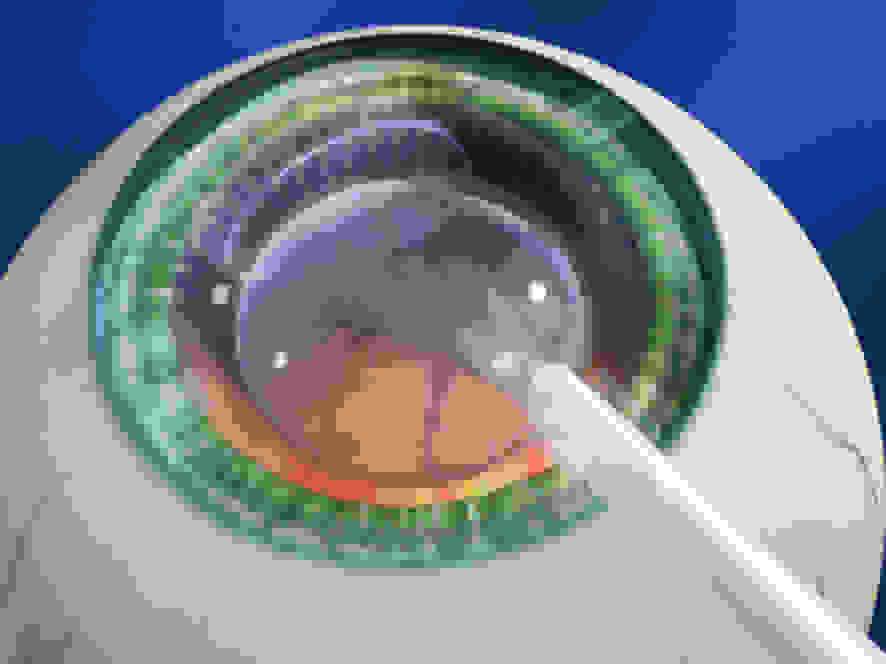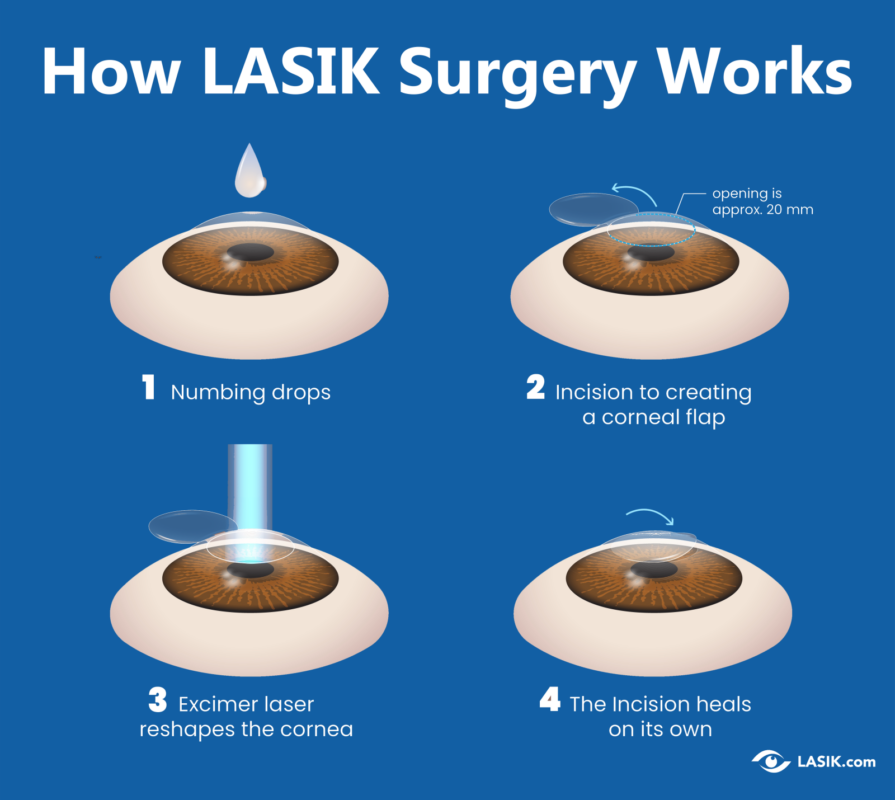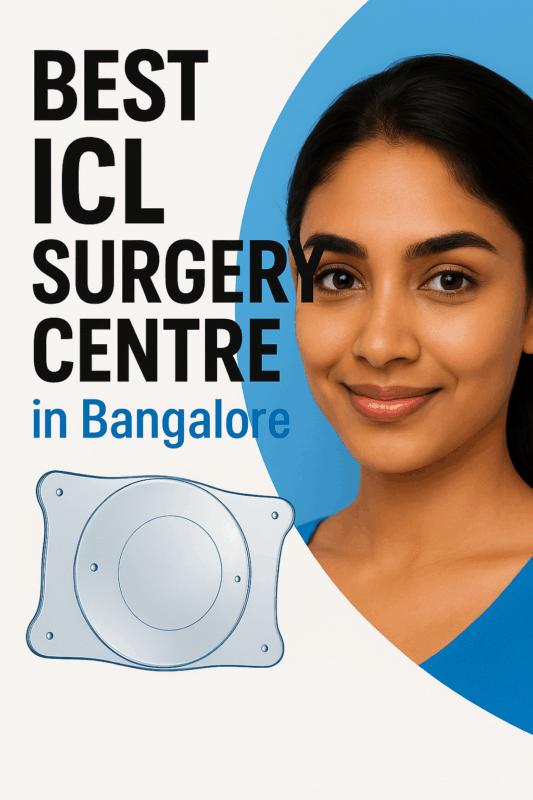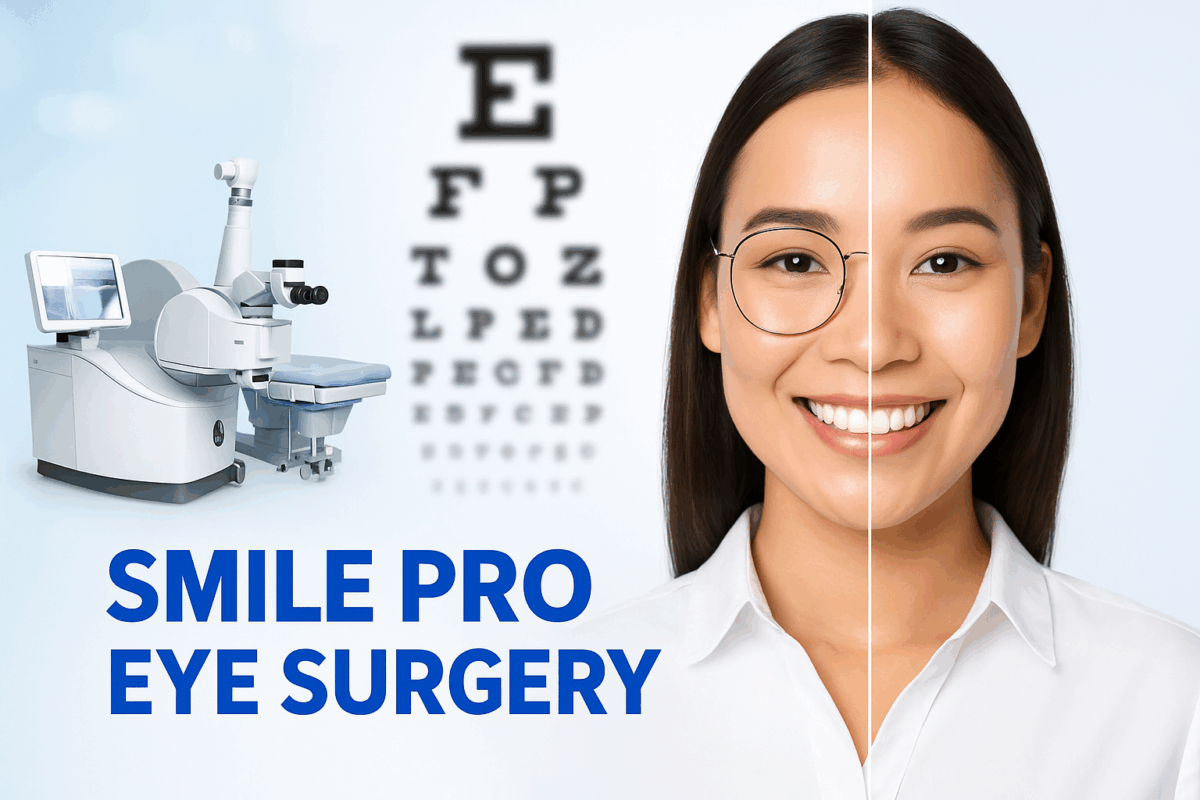Introduction to ICL Surgery
In the world of vision correction, people often hear about LASIK and PRK surgeries, which have revolutionized the way people see. However, for those who are not suitable candidates for these procedures, there’s another highly effective option: ICL (Implantable Collamer Lens) surgery. The ICL procedure has gained significant popularity due to its ability to provide a long-term solution for individuals with high prescriptions and those whose corneas may not be ideal for laser-based treatments.
This guide will delve into everything you need to know about ICL surgery, from understanding what it is, how it works, and who is an ideal candidate, to its benefits, potential risks, recovery process, and more. Whether you’re considering corrective eye surgery or simply curious, this comprehensive guide will help you make an informed decision.
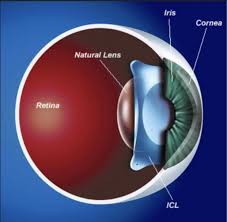
What is ICL?
Implantable Collamer Lens (ICL) surgery involves the insertion of a synthetic lens into the eye to correct refractive vision errors such as myopia (nearsightedness), hyperopia (farsightedness), and astigmatism. The ICL is placed behind the iris, the colored part of the eye, and in front of the natural lens. Unlike LASIK, which reshapes the cornea, ICL does not alter the eye’s natural structure.
ICL surgery is a safe and reversible procedure, which makes it an excellent option for people who cannot undergo LASIK or PRK due to thin corneas or high prescriptions.Surgeons use a lens made from Collamer, a biocompatible material, in ICL surgery, designed to work harmoniously with natural eye tissue and reduce the risk of complications.
How Does ICL Differ from LASIK and PRK?
While LASIK and PRK are popular refractive surgery options, ICL is different in several ways:
- Procedure: LASIK reshapes the cornea using a laser, whereas ICL involves implanting a lens inside the eye.
- Suitability: ICL is ideal for individuals with high prescriptions (over -10.00 diopters) or those with thin corneas, conditions that may make LASIK or PRK less effective or safe.
- Reversibility: One of the most notable differences is that ICL is a reversible procedure. If needed, the lens can be removed or replaced, unlike LASIK or PRK, which permanently alters the cornea.
- Recovery: LASIK typically has a quicker recovery time than ICL, as the latter involves a more invasive surgery with a longer healing period.
Ultimately, the choice between LASIK, PRK, and ICL depends on individual needs, eye health, and personal preferences.
Who is a Candidate for ICL Surgery?
Eligibility Criteria for icl corrective eye surgery
Ideal candidates for ICL surgery are generally individuals between the ages of 21 and 45 who have stable prescriptions. Candidates should also meet the following criteria:
- No significant eye disease (e.g., cataracts, glaucoma, or retinal conditions).
- A prescription that falls within the appropriate range (typically -3.00 to -15.00 diopters for myopia and +1.00 to +6.00 diopters for hyperopia).
- Healthy corneas with sufficient thickness for the lens implantation.
- No history of dry eye syndrome or other complications that could affect the healing process.
Ideal Age for the Procedure
The ideal age range for ICL surgery is between 21 and 45 years. At this age, the eyes are fully developed, and the risk of developing age-related eye conditions like cataracts is lower. However, older patients may still be candidates, depending on their overall eye health.
Benefits of ICL Surgery
Long-Term Vision Improvement
ICL surgery offers a permanent solution for vision correction that can last for many years, with results that are typically stable over time. The procedure provides clear, crisp vision without the need for glasses or contact lenses, and most patients achieve 20/25 vision or better.
Reversible Procedure
One of the key advantages of ICL surgery over LASIK is its reversibility. If needed, surgeons can remove or replace the implanted lens, making it an appealing option for individuals who may require adjustments in the future or experience changes in their vision over time.
Suitable for High Prescriptions
ICL provides an excellent solution for individuals with high prescriptions or those who have been told they are unsuitable for LASIK due to corneal thickness or severe refractive errors. ICL can treat a wider range of vision issues, including severe myopia and astigmatism.
Potential Risks and Side Effects for Icl corrective eye surgery
ICL surgery carries risks, such as infection, increased intraocular pressure, lens dislocation, and visual disturbances, which proper care and an experienced surgeon can minimize. However, the overall complication rate is low. Possible risks and side effects include:
- Infection: Infection is a potential risk after the procedure, as with any surgery, although it remains rare with proper care and precautions.
- Increased Intraocular Pressure (IOP): Some patients may experience an increase in eye pressure, which can lead to glaucoma if left untreated.
- Cataract Formation: In rare cases, ICL surgery may increase the risk of cataracts over time, particularly in older patients.
- Night Vision Issues: Some patients report glare or halos around lights, particularly at night.
Managing Post-Surgery Risks: To minimize risks, it’s crucial to follow the post-operative instructions provided by the surgeon, attend follow-up appointments, and report any unusual symptoms promptly.
Pre-Surgery Preparation for Icl corrective eye surgery
Consultation and Eye Exams for icl corrective eye surgery
Before undergoing ICL surgery, patients must undergo a thorough eye examination, including measurements of corneal thickness, eye shape, and refractive error. The surgeon will also evaluate overall eye health to ensure that ICL is the right procedure.
Steps Before the Procedure for icl corrective eye surgery
Patients are typically instructed to avoid wearing contact lenses for a period before the surgery, as contact lenses can temporarily alter the shape of the cornea. Additionally, patients may need to avoid certain medications that could interfere with the healing process.
The ICL Surgery Procedure Explained
Step-by-Step Process for icl corrective eye surgery
- Anesthesia: The procedure is performed under local anesthesia, ensuring that the patient remains comfortable throughout the surgery.
- Incision: A small incision is made in the cornea to allow the surgeon to insert the ICL lens.
- Lens Insertion: The ICL lens is then inserted into the eye and positioned behind the iris.
- Closing the Incision: The incision naturally seals itself, usually eliminating the need for stitches.
Duration and What to Expect for icl corrective eye surgery
The entire procedure usually takes about 15 to 30 minutes per eye. Most patients experience minimal discomfort, with some mild pressure during the surgery.
Recovery Process and Aftercare for Icl corrective eye surgery
Immediate Post-Surgery Care
Following the procedure, patients are typically advised to rest for the first 24 hours and avoid strenuous activities for several days. Eye drops may be prescribed to help prevent infection and reduce inflammation.
Healing Timeline for icl corrective eye surgery
Recovery time varies, but most patients notice an immediate improvement in their vision. Full recovery typically takes a few weeks, during which time patients should avoid rubbing their eyes and follow the surgeon’s aftercare instructions carefully.

Cost of ICL Surgery
Price Range for icl corrective eye surgery
The cost of ICL surgery varies based on factors like location, surgeon expertise, and the type of lens used. On average, ICL surgery costs between $3,000 and $5,000 per eye.
Factors Affecting the Cost for icl corrective eye surgery
Factors that influence the cost include the surgeon’s reputation and experience, the type of lens implanted, and additional services such as post-surgery follow-up care. Numerous clinics provide financing plans to assist patients in covering the cost.
Comparison: ICL vs. LASIK vs. PRK
Pros and Cons of Each
- ICL: Best for high prescriptions and those with thin corneas; reversible; longer recovery time.
- LASIK: Quick recovery, permanent results, best for mild to moderate prescriptions.
- PRK: Suitable for those with thin corneas, no need for a corneal flap, longer recovery time.
Which One is Better for You?
The best option depends on your specific needs. If you have high prescriptions or thin corneas, ICL may be the best choice. If you have moderate refractive errors and want a quicker recovery, LASIK may be ideal.
Success Rate and Patient Satisfaction For Icl corrective eye surgery
ICL surgery has a high success rate, with studies showing that over 90% of patients achieve 20/25 vision or better. Patient satisfaction is also high, with many individuals praising the procedure for its ability to provide clear vision without the need for glasses or contacts.
Common Myths About ICL Surgery
There are several misconceptions about ICL surgery, such as the idea that it is only for people with severe vision problems. In reality, it is a versatile procedure that can benefit many individuals, even those with moderate prescriptions.
ICL for Severe Myopia and Astigmatism
ICL is an excellent choice for those with severe myopia (nearsightedness) or astigmatism, conditions that LASIK may not be able to correct effectively. The ICL lens can address high levels of refractive error, offering a long-term solution for those who otherwise may have to rely on glasses or contacts.
Alternative Vision Correction Methods
While ICL is an excellent option for many, there are alternative methods for vision correction, including glasses, contact lenses, and other surgical options like LASIK and PRK.
How to Choose the Right Surgeon For Icl corrective eye surgery
Choosing an experienced and certified surgeon is crucial for a successful outcome. Look for a surgeon with a proven track record in performing ICL surgeries and who uses the latest technology for accurate results.
Conclusion
ICL surgery is an advanced and effective solution for individuals with high prescriptions or those unsuitable for LASIK or PRK. With its high success rate, reversibility, and ability to address severe refractive errors, ICL is an excellent option for many people looking to improve their vision. If you’re considering this procedure, consult with a qualified ophthalmologist to determine if ICL is the right choice for you.
Is ICL Right for You?
ICL may be the ideal solution for you if you have high prescriptions, thin corneas, or simply prefer a reversible vision correction method. With careful consideration and a detailed consultation, you can determine whether ICL is the best choice for your long-term vision correction needs.
Author Details:
Dr. Sushruth Appajigowda holds a prominent position as a Cornea, Cataract, Glaucoma, and LASIK Surgeon in Bangalore. He serves as the chief Cataract and Refractive surgeon at Vijaya Nethralaya Eye Hospital, Nagarbhavi Bangalore. Renowned as one of the finest LASIK surgeons nationwide, he brings with him over 12+ years of experience across multiple LASIK platforms, including ZEISS, ALCON, SCHWIND, AMO, and Bausch and Lomb. Having successfully conducted over 5000 LASIK procedures, Dr. Sushruth holds the title of a Certified Refractive Surgeon and a Fellow of the All India Collegium Of Ophthalmology. Furthermore, he stands as a distinguished speaker at various National and International Forums, using his expertise to guide you in selecting the most suitable procedure based on your health requirements.

http://vijayanethralaya.com/link-in-bio/
FAQs
1. How long does ICL surgery take?
The procedure typically takes 15-30 minutes per eye.
2. Can ICL correct astigmatism?
Yes, Toric ICL lenses are specifically designed to correct astigmatism.
3. Is ICL permanent?
Yes, but it can be removed or replaced if necessary.
4. When can I return to work after ICL surgery?
Most patients resume work within 2-3 days, but full recovery takes about a month.
5. Does ICL surgery hurt?
No, the procedure is painless due to numbing eye drops.

